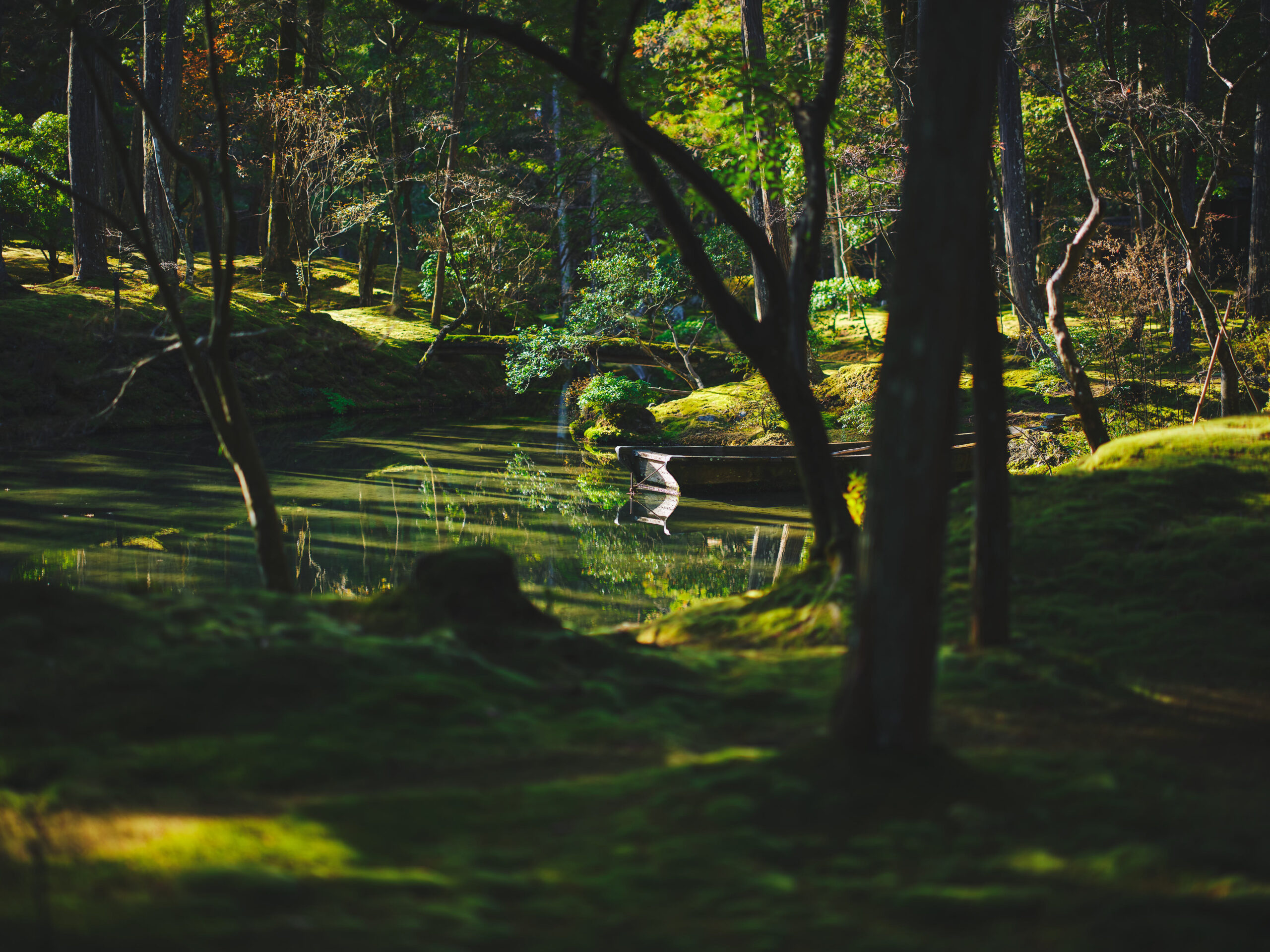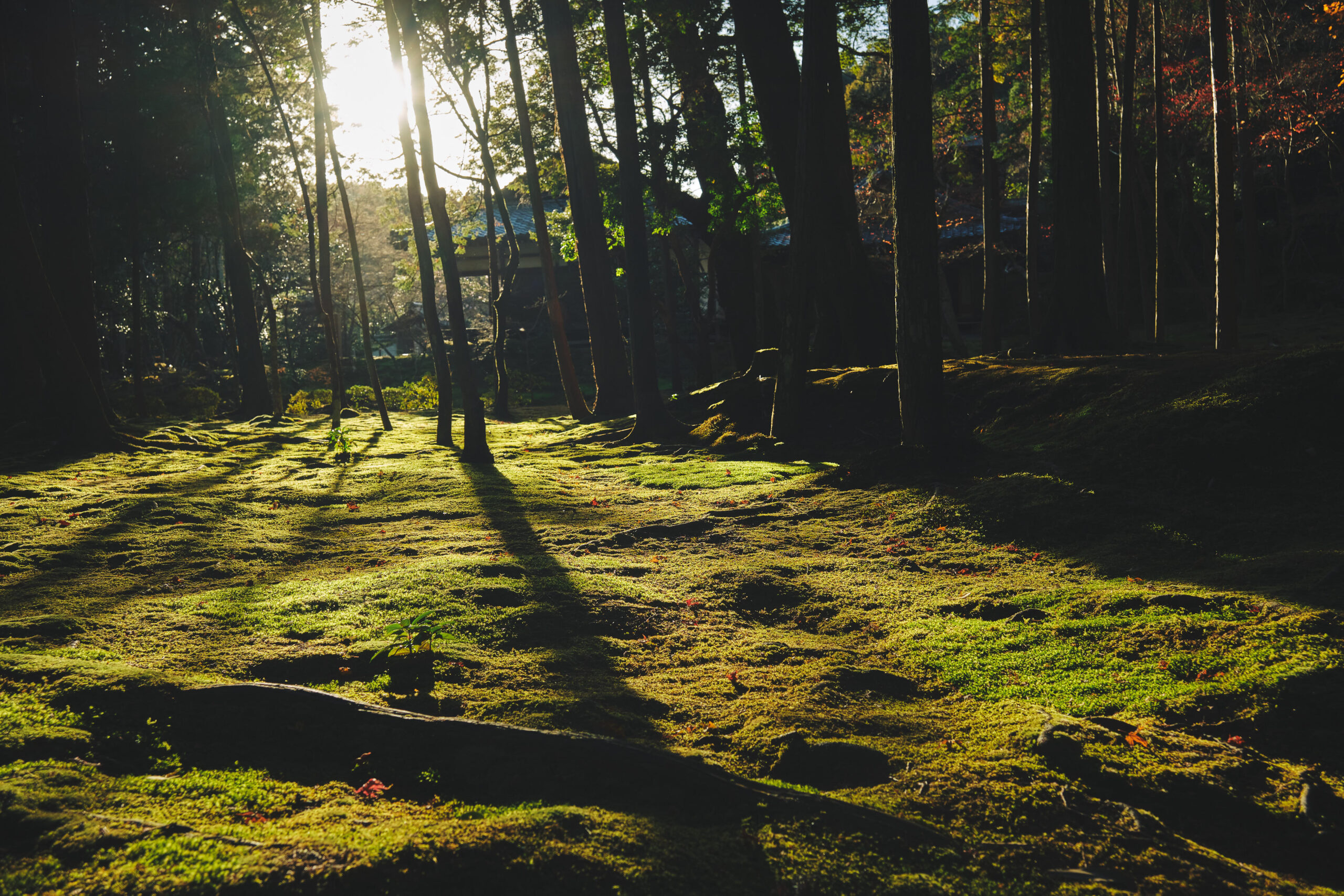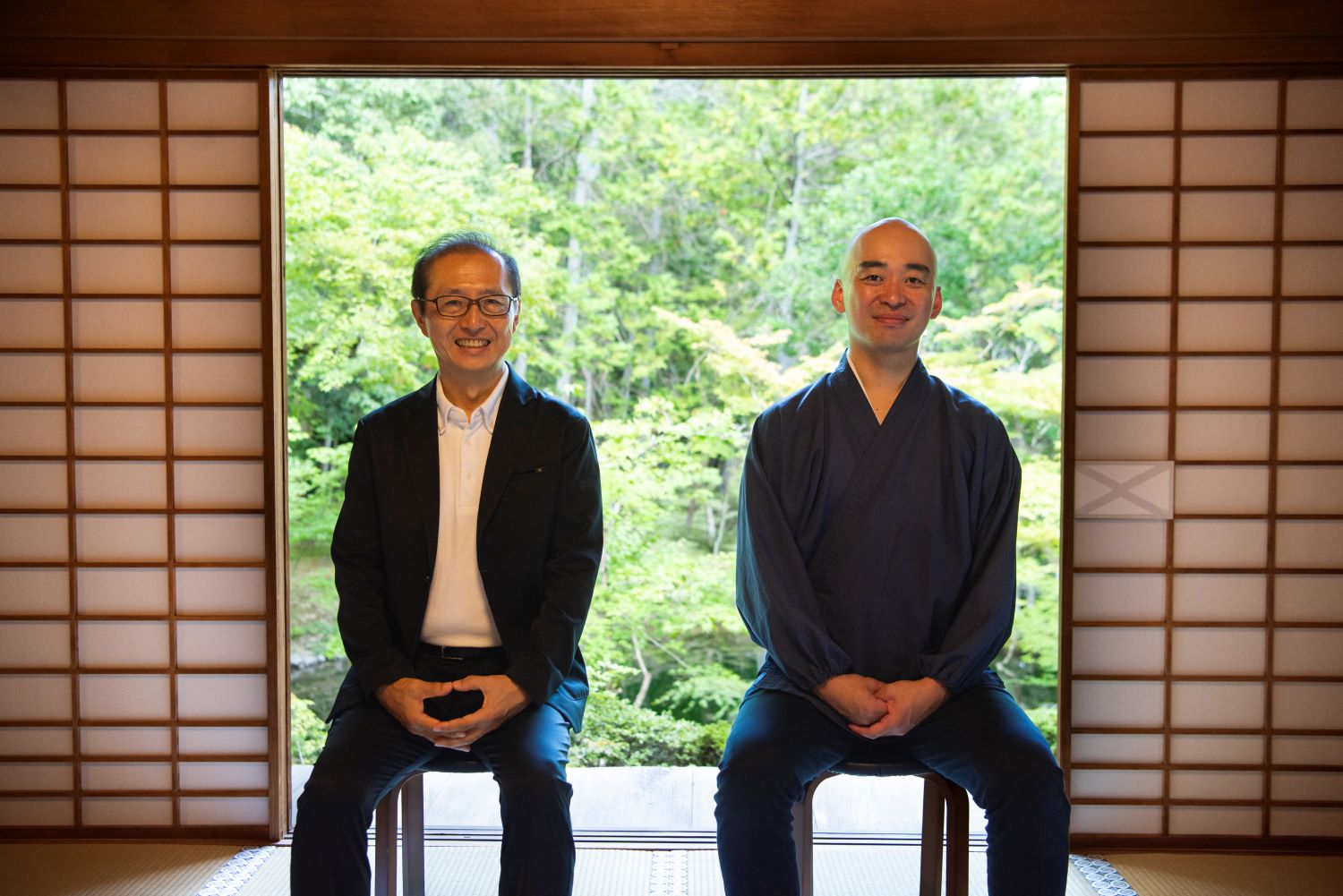2024.4.1
Gardens which inspired Kagizen

The encounter of East and West
On the land in Nishiyama where Prince Shotoku is believed to have kept his villa stands the Buddhist temple Saihoji. In 731, the Buddhist priest and bodhisattva Gyoki founded Saihoji as a the temple of the Hosso Sect of Buddhism, and in 1339, the high priest and master gardener Muso Kokushi restored the then-neglected temple as a Zen temple of the Rinzai Sect. Shoguns Ashikaga Yoshimitsu and Yoshimasa are believed to have visited the temple at one time or another, as have many other historically significant generals and nobles. Imanishi Zenya, the head of the long-established Japanese confectionery shop Kagizen, paid a visit to Saihoji. Kagizen has a history of 300 years in Gion and Higashiyama, and Imanishi is the 15th in a long line of owners stretching back to the shop’s founding.
In 2021, Mr. Imanishi opened the ZENBI KAGIZEN ART MUSEUM and began serving as its director. The way he unhesitatingly takes on the challenge of creating something new while preserving tradition is attracting attention in Kyoto.

A sense of inner stillness
Mr. Imanishi said that he had visited Saihoji before, and I asked him about his impressions of the temple after his long absence. He replied, “I can't really describe it, but the air was so clear that I felt as if it were passing right through me.”
He also described it as “silent,” explaining that “When I say ‘silent,’ I’m not talking about the mere absence of sound. Instead, there was this overwhelming sense of stillness that silenced my heart and mind. This place is far away from the city streets, and I feel that to be in this space right here, both in the past and the present, is a rich experience in and of itself. There is no luxury greater than this.”
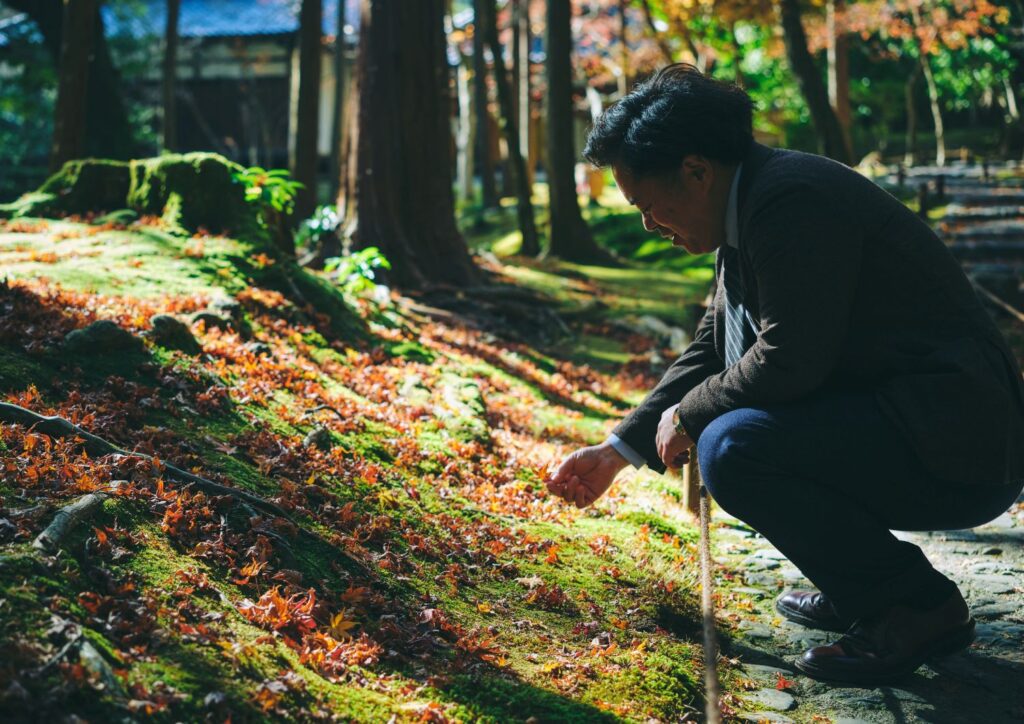
Beauty in an ordinary place
Mr. Imanishi still recalls certain fleeting moments and things that caught his eye when he last visited Saihoji.
“What attracted me was all the little things along the garden paths, such as the flowing water, the sunlight filtering through the trees, the shadows falling on the garden, and the fallen leaves on the lush moss. It truly is beautiful. The garden at Saihoji appears very intentionally put together, and at the same time more organic than nature itself. The vice head of the temple once told me ‘that the garden was naturally covered in moss.’ This description struck a chord within me because that's exactly what the garden is—naturally covered in moss. I was moved by the brilliance of this nature in its natural state.”

What is the garden’s “natural state”?
During the winter, we do not remove the fallen leaves from the moss, no matter how much has piled up. When it’s cold out, the leaves cover the moss like a blanket, allowing it to rest and build up its strength until spring. Then, in March, we turn our attention to the moss and sweep all the leaves away at once. However, even when we keep the garden well-maintained, the occasional gust of wind will pick up a leaf or two and plop it down on the moss. People often seem to think that fallen leaves will ruin the scenery, but here at Saihoji, we don’t go out and sweep up all the fallen leaves just because we don’t want visitors to see them. By intentionally leaving the garden as it is, we express its “natural state.” This stance we have taken at Saihoji seems to have left a deep impression on Mr. Imanishi.
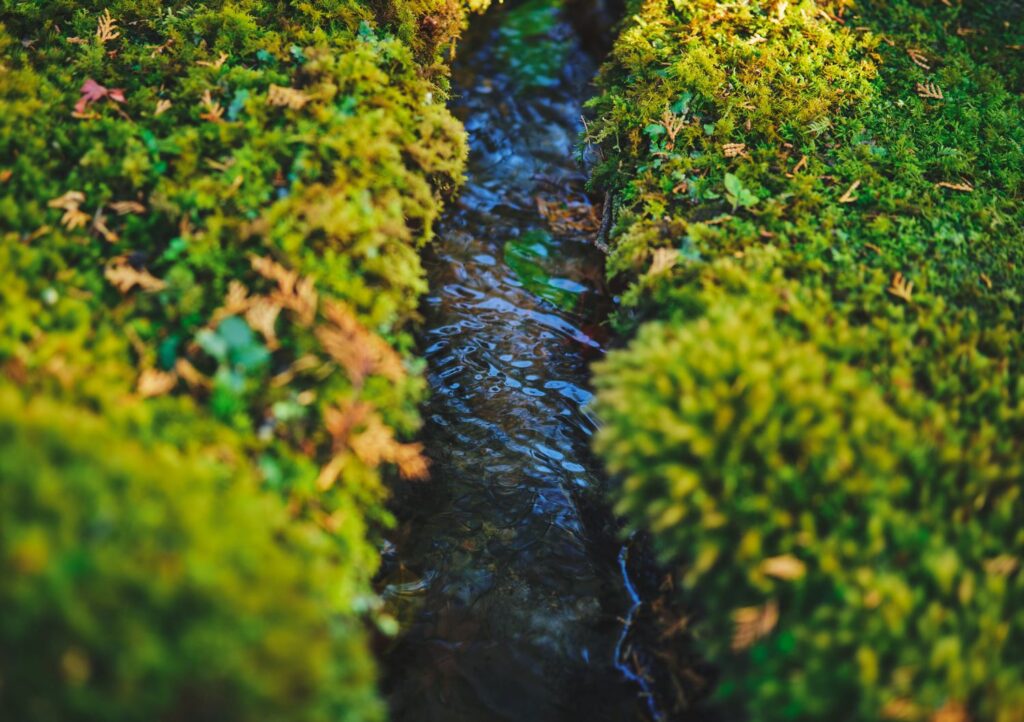
Points in common between Saihoji and Japanese confectionery
The garden has been preserved by human hands with an absolute respect for the overwhelming power of nature. Mr. Imanishi explained the similarities he saw between Japanese confectionery and the garden at Saihoji. “Although the garden looks like it’s been left in its natural state, the fact that the walking paths are kept clear shows that it’s actually very well taken care of. It’s made to feel like it's being left ‘as is.’ It’s similar with Japanese confectionery. The simpler the sweets are, the more time and effort has actually been put into making them.”

That day when Mr. Imanishi was walking the temple grounds, he was apparently inspired to create a confection related to Saihoji. It is a beautiful dried confection with green and blue curves painted on a square white world. Rice flour is combined with caster sugar, with honey added in to adjust the hardness. The confection is cut into squares, with green and blue curves flowing through the soft, fluffy whiteness.
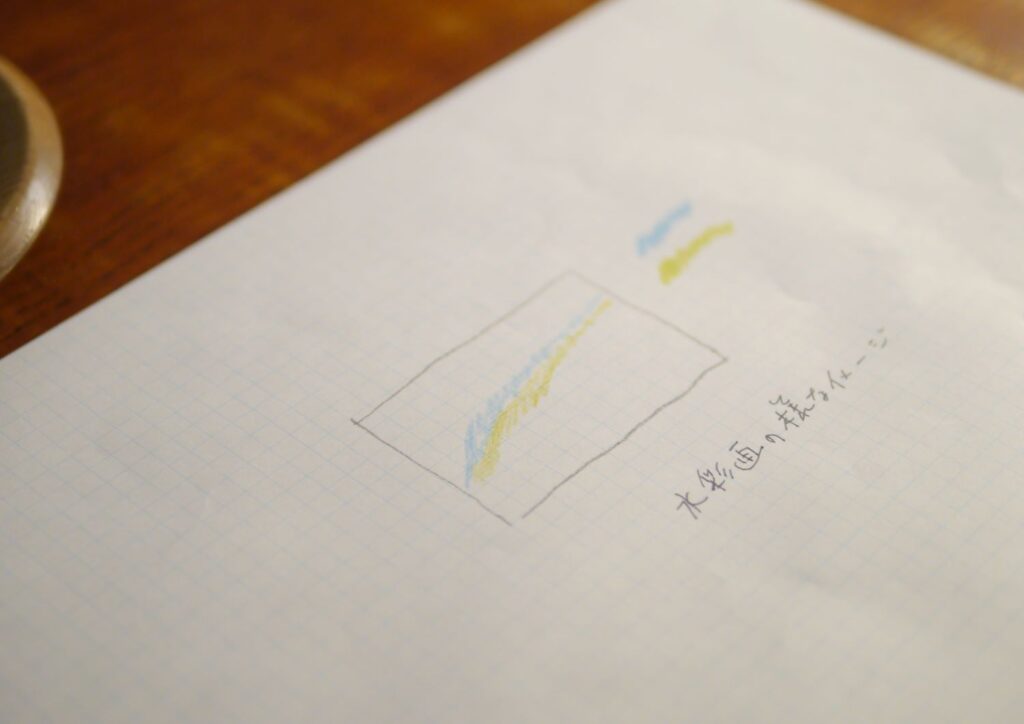
The garden as a place for self-reflection
Mr. Imanishi explains that the design of these dried confections is meant to express what he himself has experienced. “The temple is world-famous for its moss, so I considered several possibilities, such as making it green all over or speckled. I made several test samples, but nothing felt quite right. That’s when it hit me. I realized that the garden is a place for self-reflection, and therefore a place to stand still and clear the mind. It needed to be pure white.”
The green and blue lines represent certain scenes from the Saihoji garden that remained imprinted on Mr. Imanishi's memory, but he would not reveal whether the colors are meant to represent the moss, leaves, flowing water, sky, or something else entirely. Not talking about it, he explained, gives the confection some blank space. “Two people can see the same thing but perceive it differently. If the confection simply dictated the image, then I don’t think there’d be anything interesting about it. I believe that a confection is only complete when the person who’s going to eat it takes it home and opens the box. I hope that these confections will remind visitors of what they saw and felt when they came to Saihoji.”
A heart-to-heart conversation through sweets
These dried confections were born of an encounter between Saihoji and Mr. Imanishi of Kagizen Confectionery. They are available at Saihoji. Open the lid and you will experience a special moment when your mind is settled and sharpened, just like when you look at the garden. A heart-to-heart conversation between Saihoji and its visitors will be woven through these sweets.

Please note that the availability of this product may vary by season.

Imanishi Zenya, 15th head of Kagizen Yoshifusa
Born in 1972 in Kyoto, Japan, Imanishi Zenya is the 15th head of Kagizen Yoshifusa, a storied confectionery that has continued to make traditional Japanese sweets for centuries. In 2021, he opened the museum ZENBI - Kagizen Yoshifusa - KAGIZEN ART MUSEUM. He serves as its director.
Edited by: OKADA Yuki, TERADA Miki
Written by: OKADA Yuki
Photographed by: OKAMORI Daisuke, TERADA Miki
*Photos were taken with permission.
Most read
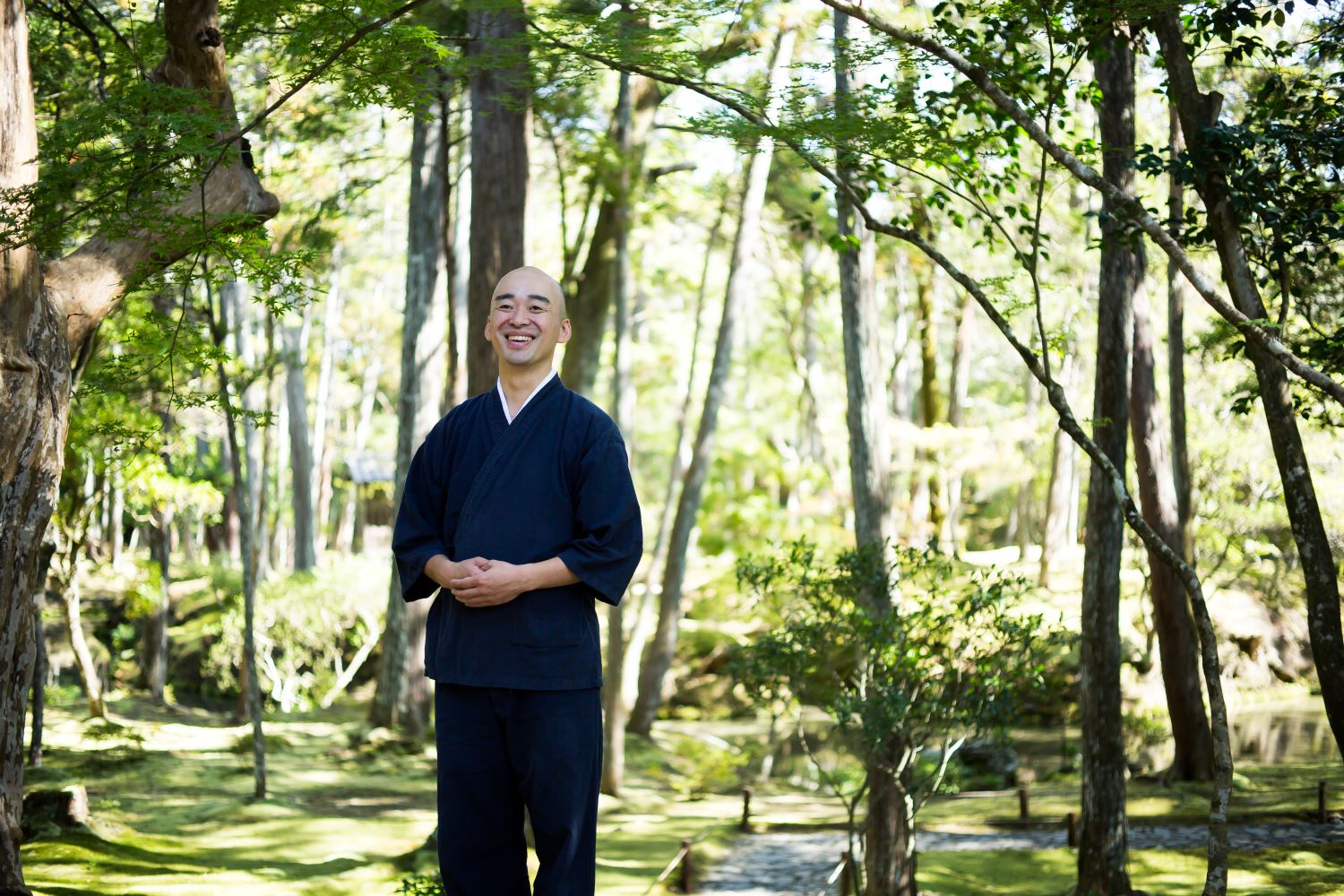
Your Heart
"What is happiness?"


